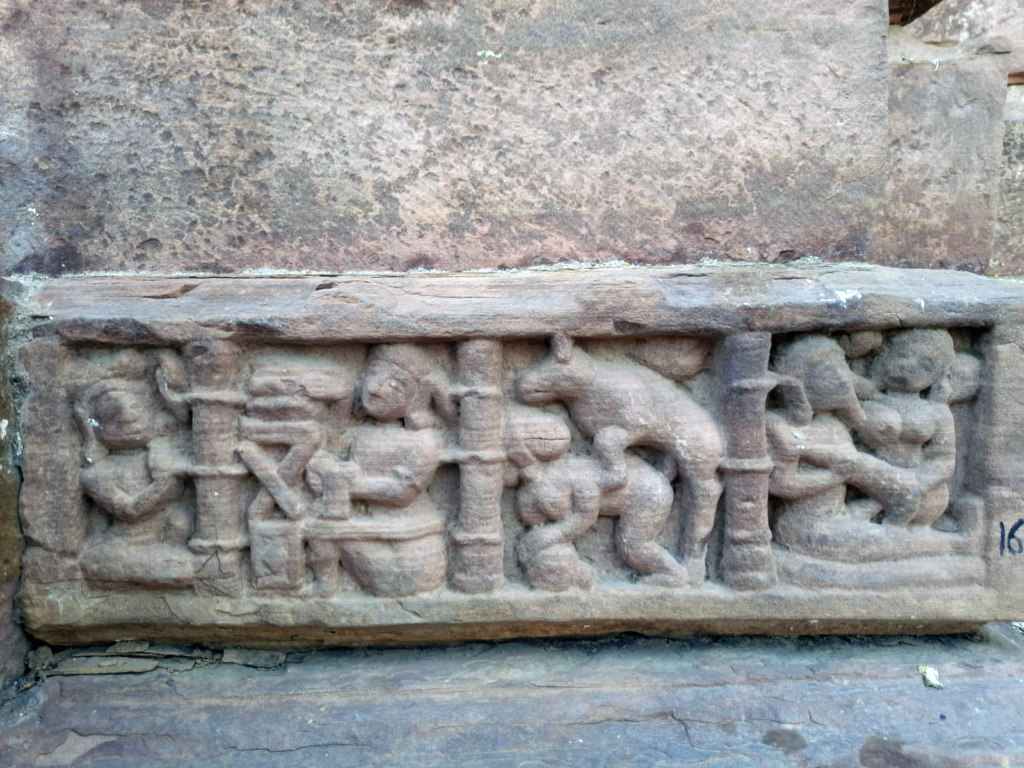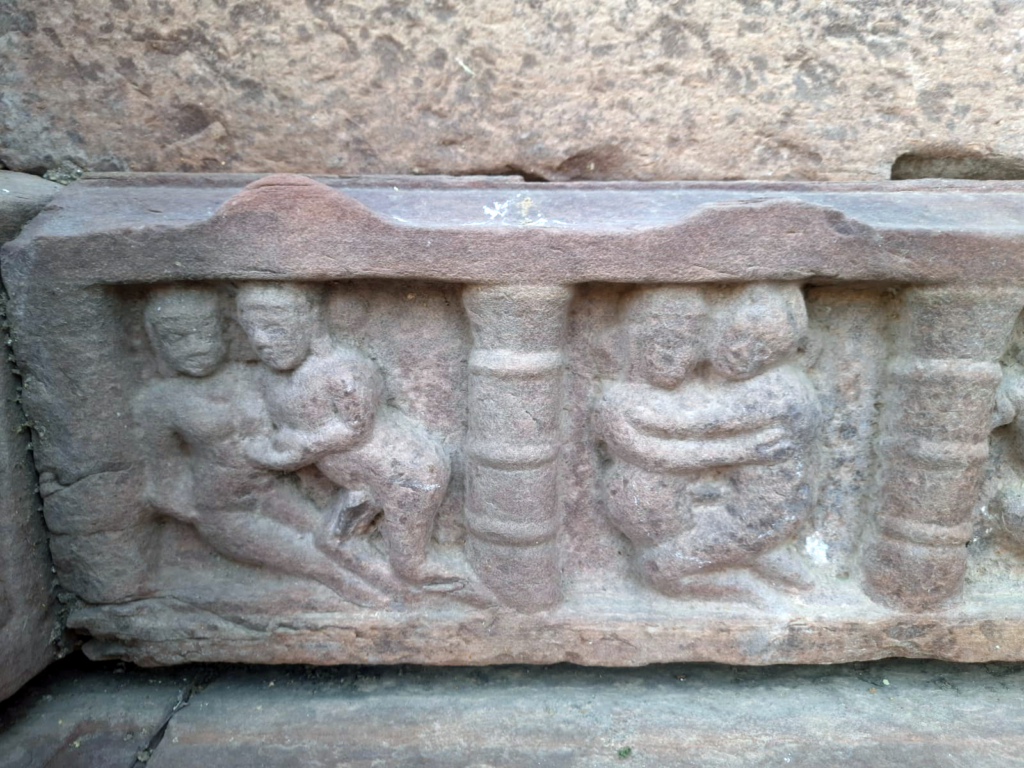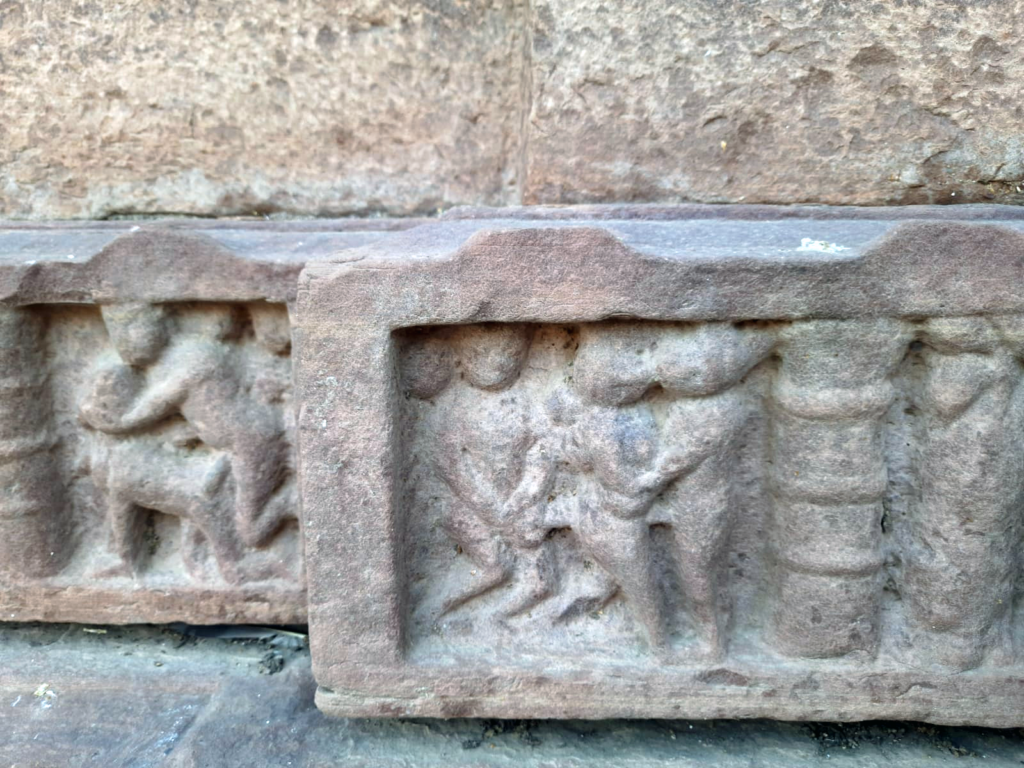On the way from Udaipur to Kota, I stopped for lunch at a little eatery. The restaurant’s walls were covered with images of several historic temples. I was fascinated and began inquiring about them. The proprietor of that tiny restaurant became extremely enthused and began speaking very loudly about the temple and its power, and others who were there joined him in raving about the temple. There are two Siva temples in Menal: the Mahanaleshvara Temple and the Mahakal Temple in Bijolia.
Now that I was really curious, I couldn’t stop going to the temple.
I began my journey towards Menal. Menal is a small village situated in the district of Chittorgarh on the Chittor-Bundi Road, about 90 kilometres from the city. It is popularly known as the mini-Khajuraho temple.
It is located next to the highway, and a long pathway took me to the temple’s main entrance. When I crossed the beautiful entrance and entered the complex, I was astounded by the temple’s magnificence. The main temple has been beautifully kept, but the smaller temples around it are steadily disintegrating. The Archaeological Survey of India is in charge of managing the temple and restoring it to its former splendour. The carved deities on the walls, including depictions of Shiva and Parvati as well as various angelic forms, have been renovated.


The Menali River feeds the waterfall near the temple complex. Shiva temples border both sides of the waterfall. Once upon a time, this location functioned as a summer vacation destination for Indian royalty.
The temple of Shiva was a great centre of Saivism under the rule of the Chahamanas. A temple from the eleventh century A.D. is built in the Bhumija style of architecture with a stellate pancharatha (Five Chariot) ground plan and a corresponding superstructure carrying strings of angasikharas ( rising towers in the Hindu temple architecture of North India), surmounted by a double amalaka (a segmented or notched stone disk, usually with ridges on the rim, that sits on the top of a Hindu temple’s shikhara, or main tower). A separate nandi-mandapa exists. The sculptures are of a high order.
The pillars and walls at the entrance of the temple have amazing erotic sculptures. The sculpted gods and goddesses, animals in erotic forms, and many lovemaking postures depicted on the temple walls express the worldly pleasures that are divine.















After spending one day at Menal, I began my journey towards Bijolia. Bijolia is located on the road between Bundi and Chittaurgarh and is situated on the picturesque Uparmal plateau.
Bijolia is a tehsil in the Bhilwara District of Rajasthan, India. This beautiful, clean town is located in the south-eastern part of the Bhilwara District. This historic town, also known as Bijolian and Vindhyavali, gained prominence as a sacred location for the Jainas and Saivas.
There was once a group of 100 Hindu temples in Bijolia, almost all dating to the 9th or 10th centuries. Now only three remain, and they date back to the 12th century.


I arrived in Bijolia in the early morning. The sun began to drop, the weather was cold, and a cool breeze blew; the narrow road wound like a snake and crossed a massive fort wall. The temple is located immediately outside the fort of Bijolia.
The gates to the temple compound were locked, and the Archaeological Survey of India (ASI) board proudly said that they manage the temple complex.
I entered the temple compound from a side entrance. The temple complex contains the Mahakal, Hazareshvar, and Undeshvar temples.
These temples date from the eleventh to thirteenth centuries A.D., with Mahakal being the oldest. The Mahakal is a two-shrined temple with a shared Sabhamandapa (audience hall) and a porch. The Hazareshavar temple is built in the Bhumija style and consists of a shrine and a mandapa. The shrine houses a massive Linga that is adorned with hundreds of tiny Lingas. Undeshvar Mahadeva’s temple is likewise in Bhumija architecture, with a shrine, Sabhamandapa, and a porch on an axis. The sanctum is around 2.4 m below the Sabhamandapa floor level.


The Mandakini Kund, a water tank used for ablutions, is also a revered body of water in the temple.
The temple appears to be like any other temple, etched with detailed craftsmanship and a beautiful design. A closer look, however, reveals the intricacies on the walls of this shrine, which depicts figurines engaging in intimate acts, like Khajuraho in Madhya Pradesh and the Sun Temple in Konark.
The temples feature sculptures, most of which are sexual and erotic, outside the walls of the temples. The aesthetics and intricacies of sculptures astounded and captivated me. Hundreds of erotic carvings embellish its exterior walls with eternal aesthetics that are both practical and meaningful. The Bijolia temple is one of the best illustrations of the sculptor’s sexual fascination and his mastery of bringing eroticism to life in stone.
Undeshwara Mahadeva Temple is architecturally the most sophisticated and is surrounded by exquisite sculptures. The temple has Dikpalas, forms of Shiva as Bhairava, forms of Narasimha avatar, and a slender elephant-headed goddess. It also has splendid sculptures of musicians and dancing figures, both male and female.

The most intriguing aspect is that the sculptures in the Bijolia temples prominently depict diverse expressions of love, passion, and desire. The series of sculptures on the walls of these temples depict sexual acts that involve polygamy, lesbian relationships, polyandry, figurines indulging in intimate acts and many more.
Most of the sculptures have signs of ageing and vandalism, which makes them even more erotic.
I walked around the temple several times, and all of the visitors seemed to have no interest in what was on the walls; they just went into the sanctum, prayed, took a few photos, and departed. I’m not sure if they’re aware of these erotic sculptures; they all appear to ignore them.
As I sat in Sabhamandapa, I could hear hundreds of chisels pounding hard on stones and removing blocks to bring those lovely sculptures to life. My thoughts travel back and forth. My mind is racing with questions, such as what the creators of these sculptures envisioned. What motivated them to make these sculptures? Who sculpted these magnificent symbols of divine and creative power? and how did society interpret these sculptures at the time?
I also desire to explore how individual and social desires, attitudes about sex, beliefs, values, habits, gender roles, and relationships were during that period.
I couldn’t uncover any answers.



